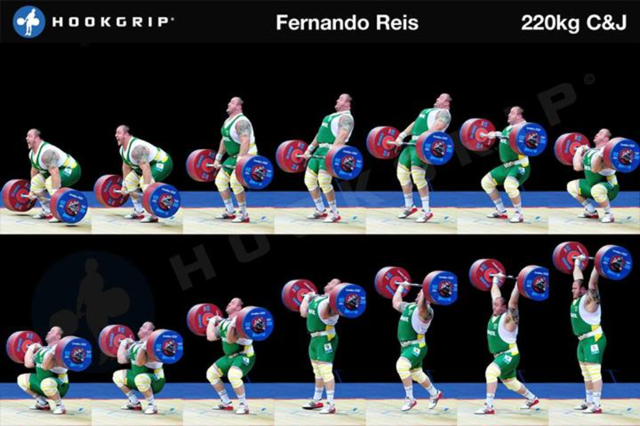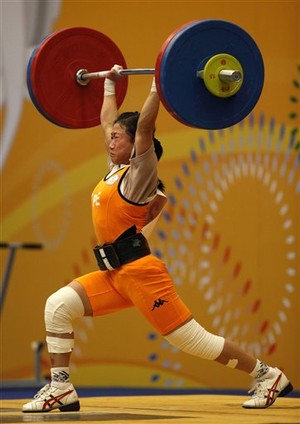Olympic style weightlifting is fairly simple to the average spectator. Each competitor gets three attempts at two different kinds of lifts, needing one valid lift of each type to qualify. One of the competition lifts that we have cover before is the Snatch, and the other is the cryptically named “clean and jerk”. In this article we will take you through the clean and jerk step by step.
If you are a beginner, first you should familiarize yourself with the terminology. The individual weights (“discs” or “bumper”) are loaded onto an Olympic-grade barbell, which weighs 20 kilograms for men and 15 kg for women, with the discs sitting on rotating sleeves at the end of the bar. The discs are held in place by collars, or weight caps, which can weigh 2.5 kg each in some case.
Performing an Olympic Clean and Jerk: How is it done?
Don’t be confused, the clean and jerk is a single lift, but it involves two distinct maneuvers that end in the massive barbell raised proudly above the competitor’s head.
[unordered_list style=”arrow”]
- To begin with, the barbell should rest evenly over both feet with the bar aligned above the joint of the toes. The “clean” portion of the lift is the first stage in which the barbell is raised from the mat and racked across the collarbone. The tremendous weight then rests on the clavicles as the lifter pauses to breathe.
- The feet must be set shoulder-width apart, and as the knees are bent the back should be kept straight. Proper form throughout the lift is a key to success, in addition to helping avoid injury. A lifting belt will help ensure the back remains straight as it provides support to the lower back and waist.
- The grip should be palms over the bar, just outside the feet and knees with the thumbs under the armpits. The legs generate the start of the movement as they push down into the floor so the lifter can accelerate in an upward spring. The bar must be raised in a controlled motion just in front of the legs as the lifter emerges from the squatted position.
- Similar to the Snatch, the end of the clean stage occurs in an explosive motion as the barbell reaches mid-thigh. In a ferocious shrug, the bar is tossed upward as the elbows are kept out and above the bar for as long as possible and the feet jump out wider.
- At the top of the movement, the lifter returns to the squat and racks the barbell across the top of the chest, elbows locked. The barbell is then stabilized as the lifter rises from the squat to full standing position and pauses to breathe for a moment.
- Proper Olympic shoes are key to stability throughout the clean stage of the lift, especially to support the squat with the raised heel. Metatarsal straps can supplement the shoes for added stability if desired.
- The “jerk” stage transfers the bar from the clean stage to above the head with legs in a lunging position. The lifter now dips down slightly to generate some power from the legs without returning to a full squat, keeping the back perpendicular to the floor.
- With the weight balanced on the balls of the feet, the lifter springs upward and sets the feet in a lunging position, locking the arms into place with the barbell overhead. After stabilizing the bar, the lifter rises to a standing position.
[/unordered_list]
The below image details the Olympic Clean and Jerk process:

Iranian Olympian Hossein Rezazadeh knows a thing or two about the clean and jerk. He’s the Olympic record-holder in the 105-plus kg weight class with his 263 kg lift at Athens 2004.
Step by Step Coaching: How to Perform Clean and Jerk
Part 1
Part 2
Part 3
In our next post we discuss Our Top 8 Best Adjustable Weight Bench. Thanks for visiting www.olympicweightsetreview.com, if you liked this article please use our social buttons to give us the thumbs up.
[hr]
Related Post
[related_posts limit=”3″]
